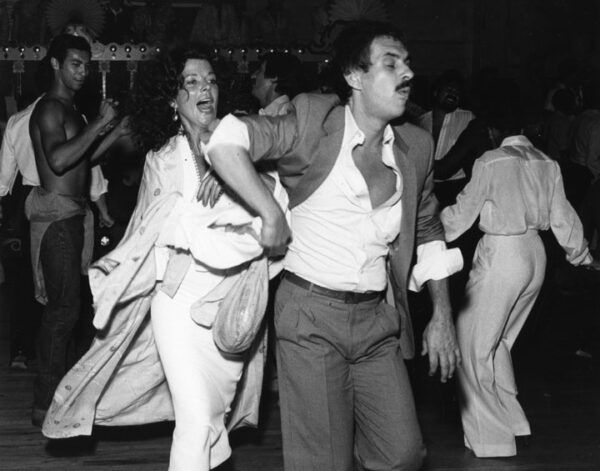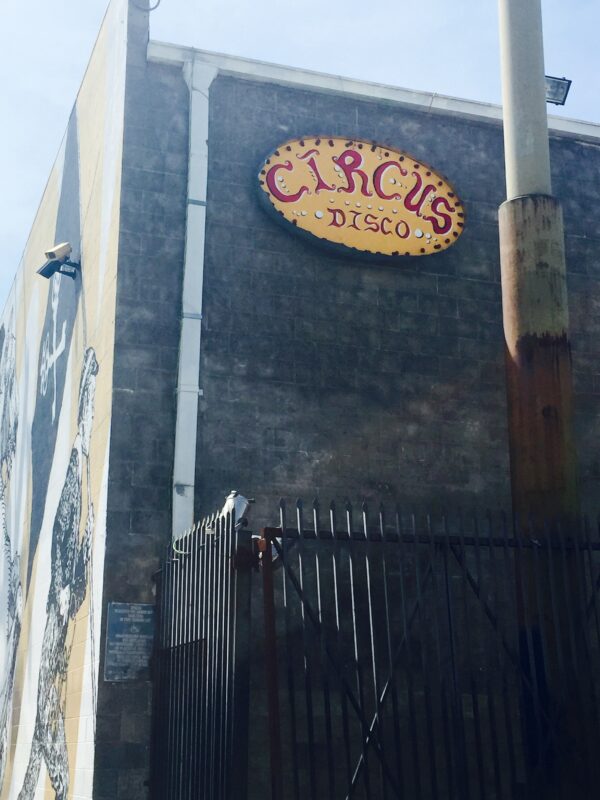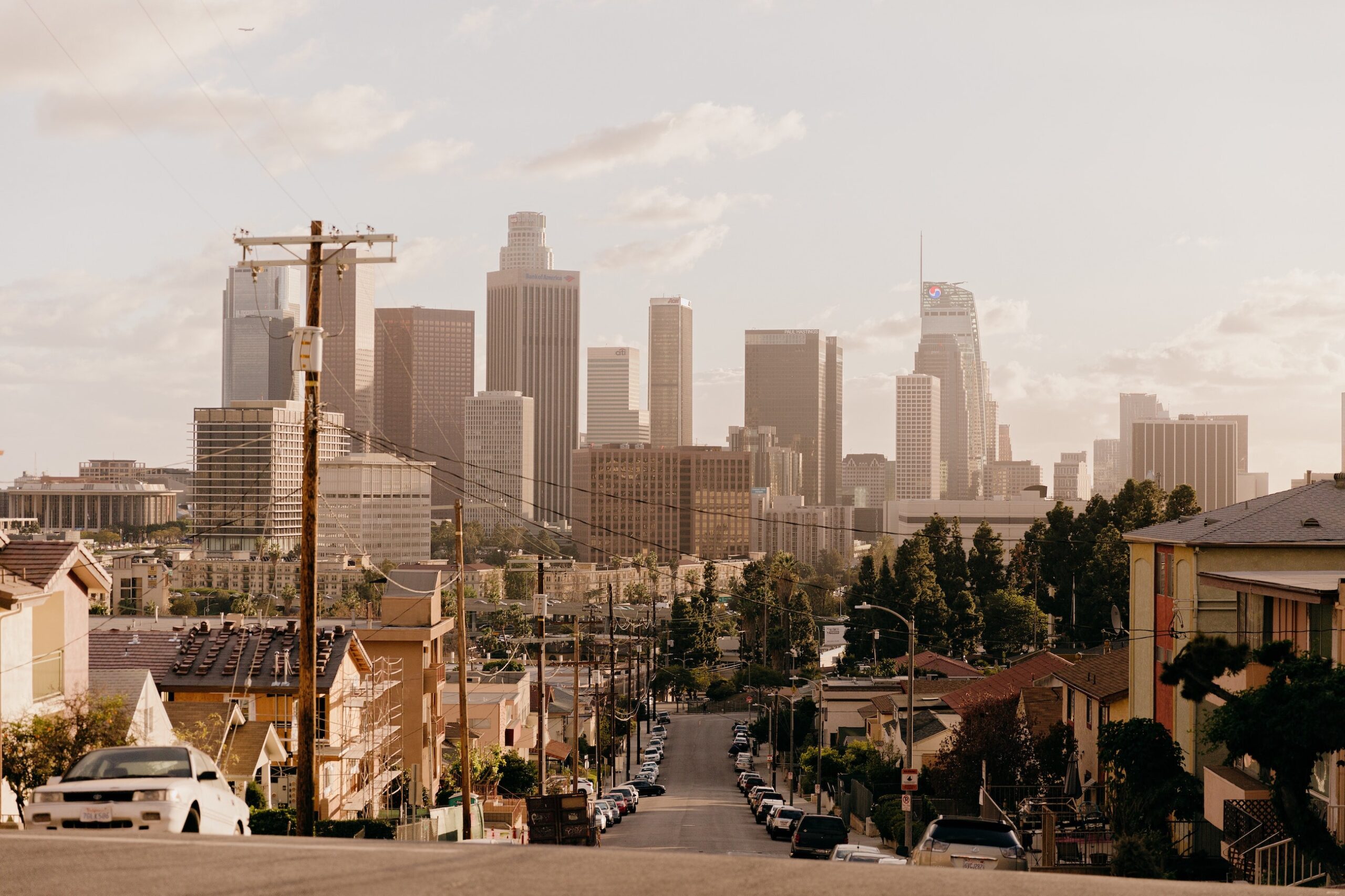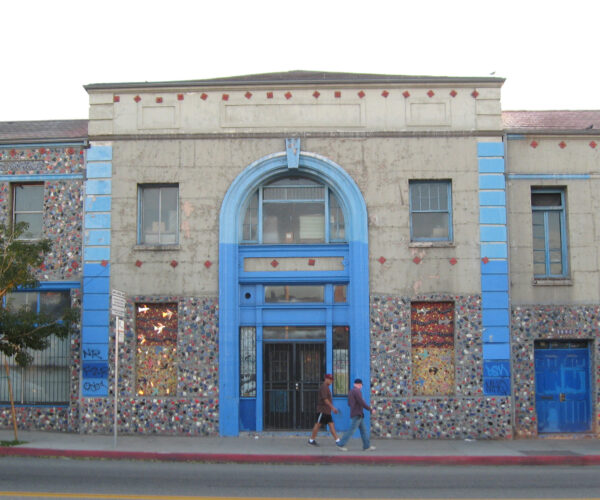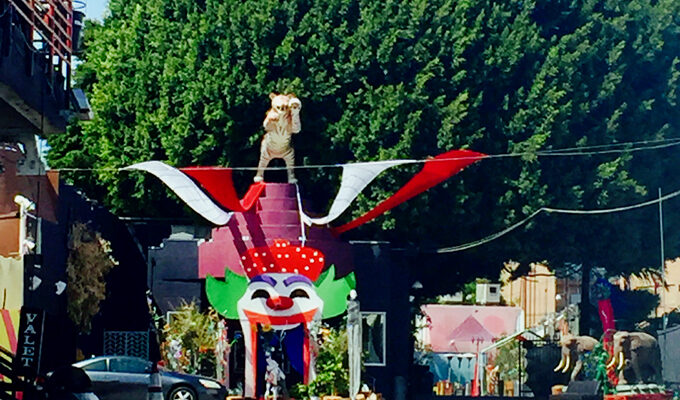
Place
Circus Disco (Demolished)
From 1975 to 2016, Circus Disco was a significant social and cultural anchor for LGBTQ Latinxs in Los Angeles.
Lost
Circus Disco was demolished in spring 2016 in order to make way for a new mixed-use project.
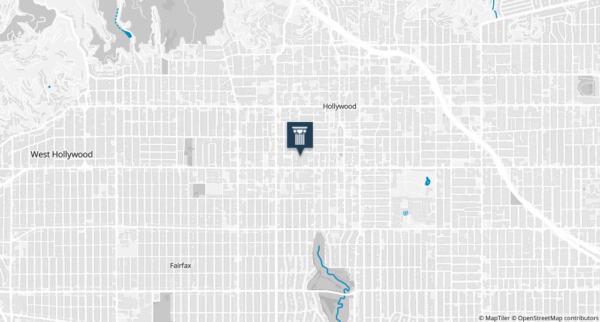
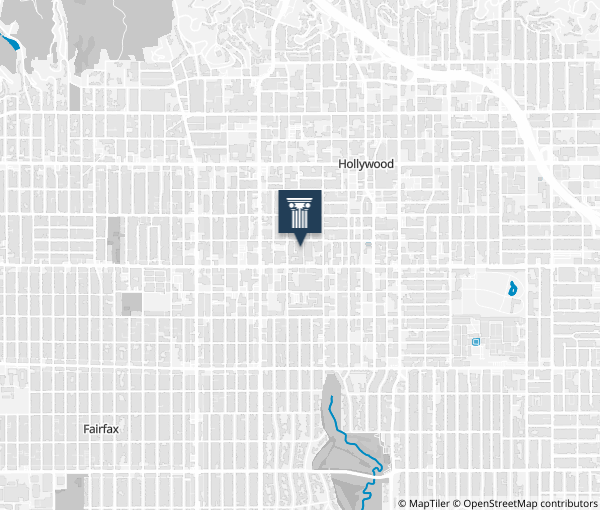
Place Details
Address
Architect
Year
Style
Designation
Property Type
Community
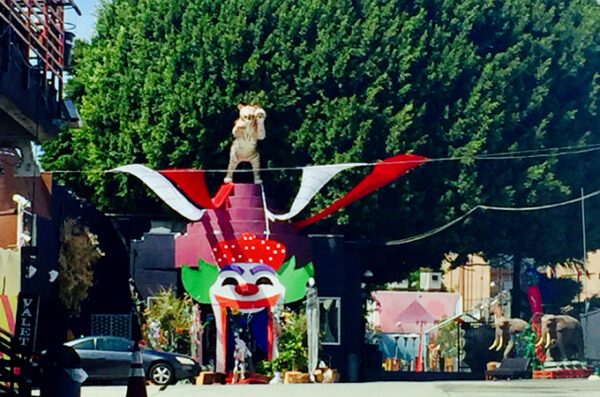
Circus Disco, 2015. Photo by Laura Dominguez/L.A. Conservancy.
Overview
Founded in 1975, Circus Disco first opened its doors in Hollywood as a dance club and entertainment venue for LGBTQ Latinxs in Los Angeles. The building itself had been constructed the previous year. Founders Gene LaPietra and Ermilio “Ed” Lemos sought to create a friendly and inclusive atmosphere within Los Angeles’ burgeoning disco scene.
Beginning in the 1960s, the number of bars and clubs visibly catering to LGBTQ communities rapidly increased in neighborhoods throughout Los Angeles. These establishments not only served as social hubs, but they also provided spaces for people to meet and organize around political issues.
Circus Disco also represented a response to the discrimination that people of color often experienced at venues with predominantly white patrons, particularly those in West Hollywood. Other popular nightclubs, like The Factory, often discouraged non-white patrons by requiring multiple forms of identification.
While its clientele was largely Latinx, Circus Disco considered itself a haven for anyone who felt unwelcome at other establishments, including trans men and women. Jewel’s Catch One in the Mid-City neighborhood, which was reportedly the nation’s first black LGBTQ disco when it opened in 1972, served a similar purpose.
The building was demolished in spring 2016 in order to make way for a new mixed-use project. The new development incorporates historic elements from Circus Disco.
Fundada en 1975, Circus Disco abrió sus puertas en Hollywood como un club de baile y lugar de entretenimiento para los miembros de la comunidad gay latina de Los Ángeles. El edificio en sí se había construido el año anterior. Fundadores de Gene LaPietra y Ermilio “Ed” Lemos buscaron crear un ambiente acogedor e integrador dentro de la floreciente escena de discoteca de Los Ángeles.
A partir de la década de 1960, el número de bares y clubes visiblemente que atienden a la comunidad LGBTQ aumentó rápidamente en los barrios de Los Ángeles. Estos establecimientos no sólo sirven como centros sociales, sino que también proporcionan espacios para que las personas se reúnan y organizan en torno a temas políticos.
Circus Disco también representó una respuesta a la discriminación que los hombres gay de color a menudo experimentaban en escenarios y discotecas con clientes predominantemente caucásicos, en particular los del área de West Hollywood. Otros clubes nocturnos, por ejemplo, a menudo desanimaban y rechazaban a clientes que no eran caucásicos al requerir múltiples formas de identificación.
Mientras que su clientela era principalmente latina, Circus Disco se consideraba un refugio seguro para cualquier persona que no se sentía bienvenida en otros establecimientos. Catch One en el barrio de Mid-City, que era según se informa era la primer discoteca gay y lesbiana en la nación para la comunidad negra cuando se inauguró en 1972, sirve un propósito similar.
About This Place
About This Place
Bars and other social establishments were often the only places where LGBTQ individuals could visibly be themselves. They frequently provided their patrons with a reliable support system and served as a meeting space for political organizing.
Circus Disco also provided a space for organizers in the broader civil and labor rights movement to work with LGBTQ communities on specific campaigns.
In 1983, César Chávez met with the Project Just Business, a lesbian and gay coalition, at Circus Disco. The coalition had invited Chávez to speak on the topic of corporate boycotts and fundraising tactics. The owners of Circus Disco prepared a buffet dinner for one hundred guests, and César Chávez was given a standing ovation at the conclusion of his speech. Chávez told the diverse crowd, “Your coalition…it’s really important, because you represent to us people who are dedicated to a principle. And you know very well what it is to be discriminated.”
Circus Disco, along with The Factory in West Hollywood and Jewel’s Catch One in Los Angeles’ Mid-City, reflected the critical intersection of race, gender, class, and sexual identity in the built environment of greater Los Angeles.
Bares y otros establecimientos sociales eran a menudo los únicos lugares donde individuos de la comunidad LGBTQ no tenían que esconder sus preferencias sexuales y modo de vivir. Con frecuencia se proporcionan a sus clientes con un sistema de apoyo confiable y sirvió como un espacio de encuentro para la organización política.
Circus Disco también proporcionó un espacio para los organizadores del movimiento de los derechos civiles y laborales para que trabajaran con la comunidad LGBTQ en campañas específicas.
En 1983, César Chávez se reunió con el Proyecto Negocios Justos (Project Just Business), una coalición de gays y lesbianas, en el Circus Disco. La coalición había invitado a Chávez a hablar sobre el tema de los boicots a corporaciones y tácticas para recaudar fondos. Los propietarios de Circus Disco prepararon una cena para un centenar de invitados, y a César Chávez se le dio una ovación de pie al terminar su discurso. Chávez dijo a la multitud diversa, “Su coalición…es realmente importante, porque ustedes representan personas que se dedican a un principio. Y ustedes saben muy bien lo que es ser discriminado.”
Circus Disco, junto con The Factory en West Hollywood y Catch One en el área de Mid-City en Los Angeles, reflejan la intersección importante de raza, género, clase social y la identidad sexual en el entorno construido de Los Ángeles.
